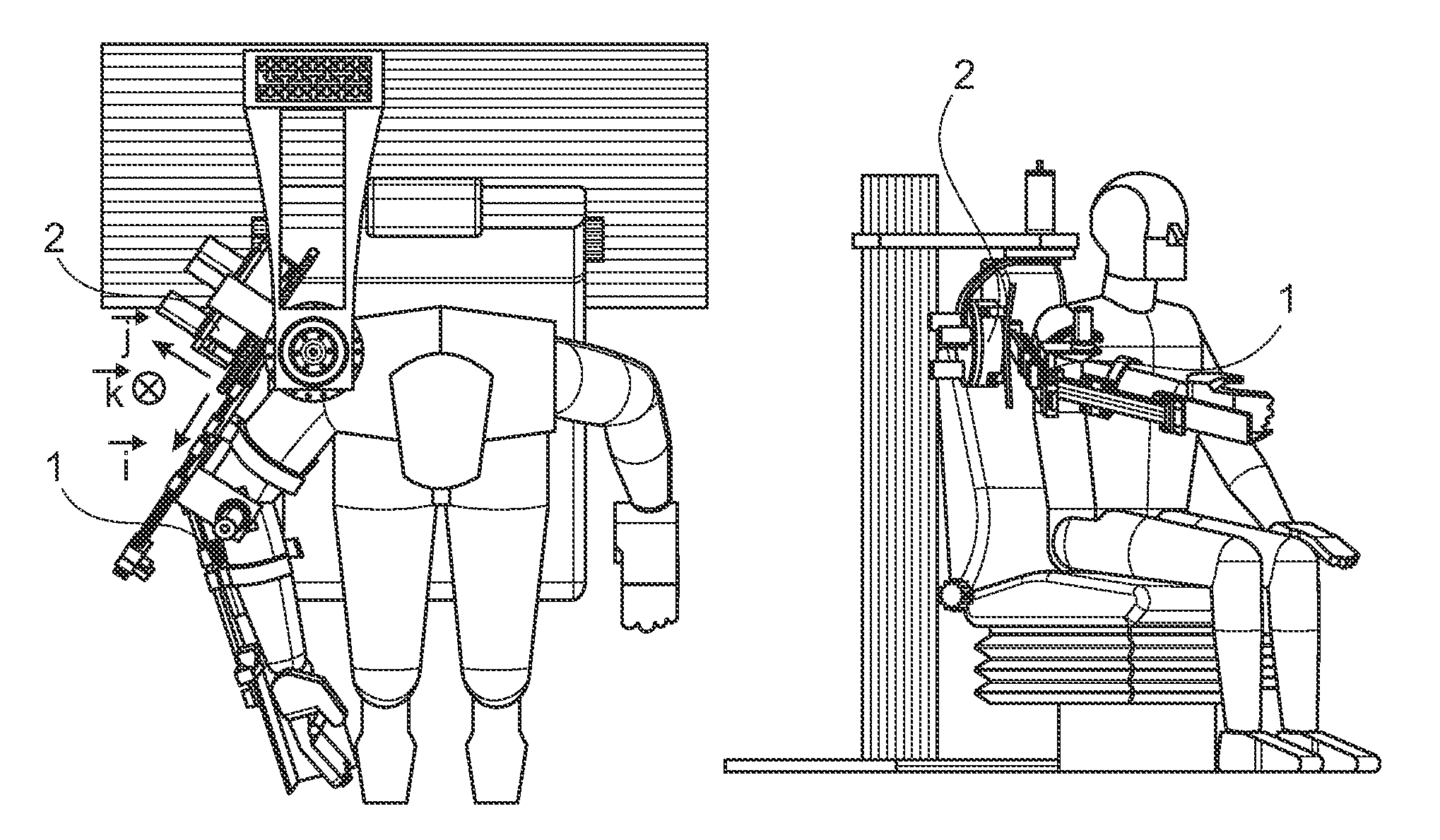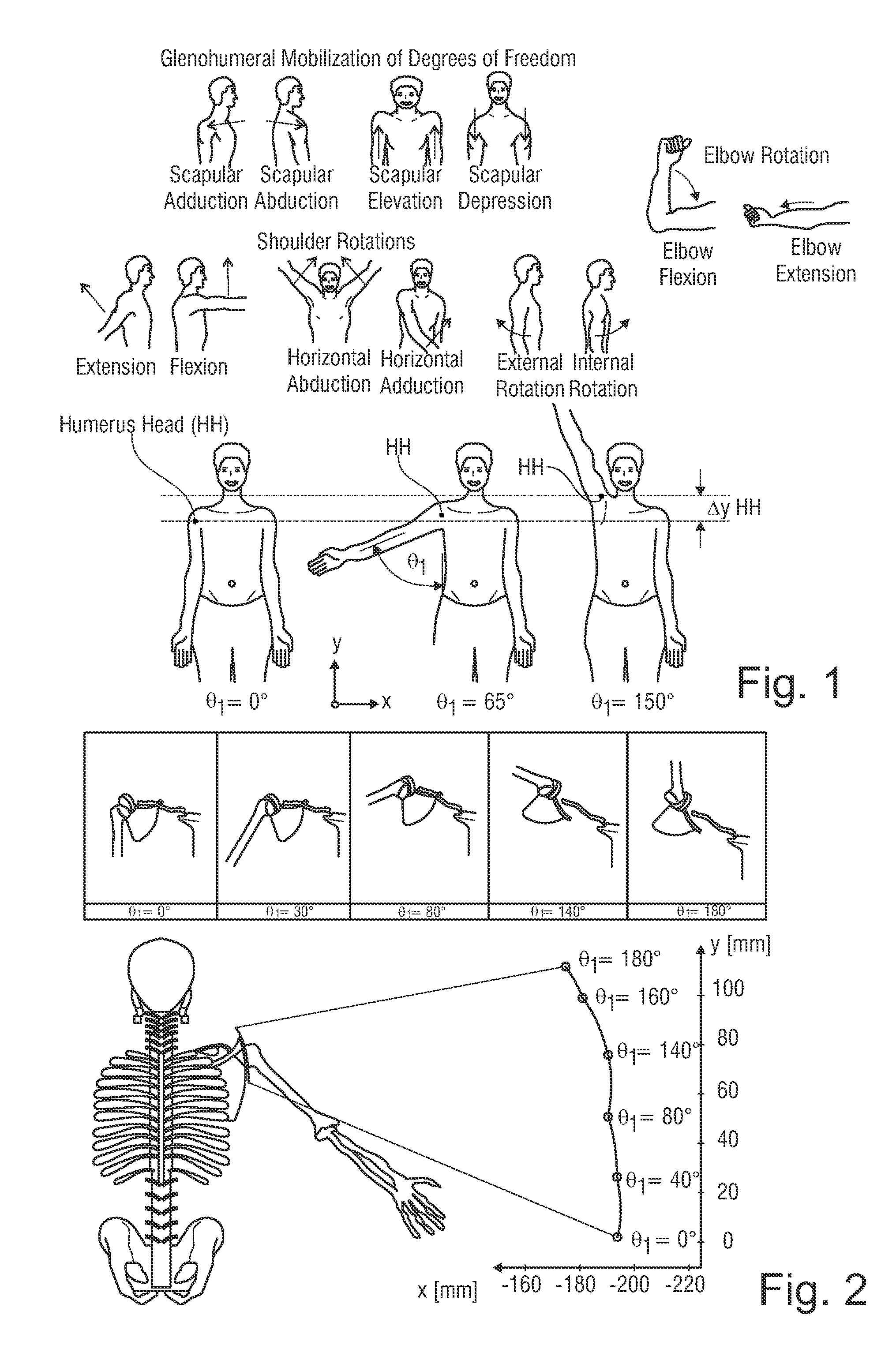Exoskeleton
a technology of exoskeleton and skeleton body, which is applied in the field of exoskeletons, can solve the problems of serious, long-term disability, and neurologic injuries, and achieve the effects of reducing friction, improving friction, and significantly shortening phase set-up
- Summary
- Abstract
- Description
- Claims
- Application Information
AI Technical Summary
Benefits of technology
Problems solved by technology
Method used
Image
Examples
Embodiment Construction
[0061]In the following preferred embodiments of an exoskeleton for humans is described with reference to the figures. Features of one embodiment can be used in other embodiments, too, if applicable.
[0062]The exoskeleton 1 can be used at many human joints, including but not limited to knee, shoulder, hip / pelvis, ankle, and spine.
a. Design of the 3-DoF Self-Aligning Joint Element
[0063]In general a parallel mechanism, as illustrated in FIG. 13 in six variations, can be used as underlying mechanism for implementing a joint element 2 for an exoskeleton 1 according to the invention. The use of such a kinematics in an exoskeleton 1 for rehabilitation, human augmentation, human measurement and many other purposes ensures ergonomy, large range of motion for joint movements, the ability to deliver and measure joint translations together with joint rotations, allows an ease of attachment due to no calibration requirements and many other advantages. It should be noted that the exoskeleton can o...
PUM
 Login to View More
Login to View More Abstract
Description
Claims
Application Information
 Login to View More
Login to View More - R&D
- Intellectual Property
- Life Sciences
- Materials
- Tech Scout
- Unparalleled Data Quality
- Higher Quality Content
- 60% Fewer Hallucinations
Browse by: Latest US Patents, China's latest patents, Technical Efficacy Thesaurus, Application Domain, Technology Topic, Popular Technical Reports.
© 2025 PatSnap. All rights reserved.Legal|Privacy policy|Modern Slavery Act Transparency Statement|Sitemap|About US| Contact US: help@patsnap.com



